10. The Shining (1980)
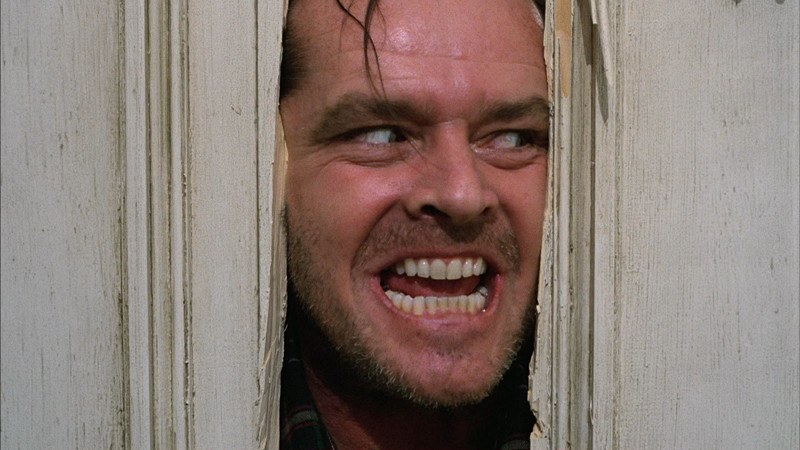
With an impassioned love for detail, technicality, and formalism, Stanley Kubrick’s The Shining is an eerie and effective brew of arthouse genuflection and haunted house tropes. Jack Nicholson is further out there then Sputnik in his over-the-top portrayal of writer’s block-stricken recovering alcoholic Jack Torrance, caretaker for the season at the remote Overlook Hotel.
While eschewing much of what made the Stephen King best-seller so compelling, Kubrick instead opts for atmospherics and technical bravado over authentic drama, but the results largely make ghoulishly good (if you can “overlook” Shelley Duvall’s ridiculous performance and Scatman Crothers’ atrophied potential).
But, for all its lapses––and it’s a terribly flawed and indulgent genre exercise––the ad-libbing “Heeeeere’s Johnny!” from an axe-wielding Jack has a delirious charisma. Also, and most notably, a tremendous commendation is owed to Krzysztof Penderecki for his magnificently terrifying soundtrack which heightens and refines many memorable set pieces. The Shining is a questionable classic with obvious appeal and allowable partition that’s catnip for Kubrick fans.
9. The Texas Chainsaw Massacre (1974)
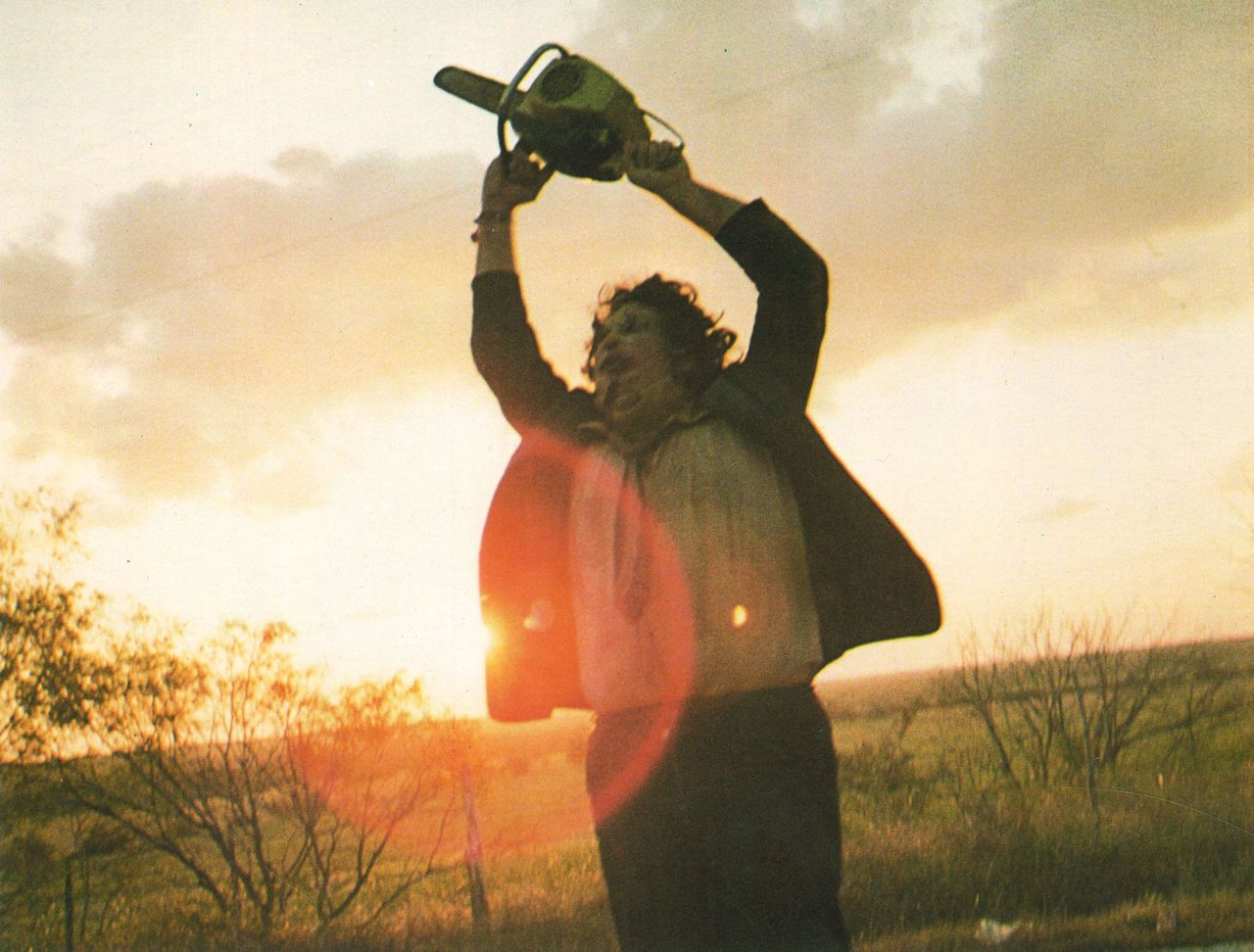
Tobe Hooper’s low-budget bombshell of a horror film The Texas Chainsaw Massacre unleashed a hurricane of dissention and controversy for all of its exploitative and shocking content. Partially inspired by the real-life story of serial killer Ed Gein, Hooper’s film, which effectively opens like a documentary, is relentlessly paced and purrs with a dangerous ferocity.
Sally Hardesty (Marilyn Burns) and her paraplegic brother Franklin (Paul Partain) along with a small group of friends visit their family’s old farmhouse in bucolic Texas. In no time these unlucky standard-bearers meet the people next door, a family of deranged and deadly reprobates including the chainsaw-swinging Leatherface (Gunnar Hansen), who has a rather eye-catching mask made of human skin.
A backwoods showpiece of terror stemming from a deformation of the American family, Hooper displays amazing restraint in his use of gore while still maintaining immense terror through subtle touches, excessive claustrophobic elements, and a lucid nightmare scenario. At once profoundly personal, fiercely disturbing, and strongly artistic, The Texas Chainsaw Massacre is a nerve-wracking stroke of sinister genius.
8. The Thing (1982)
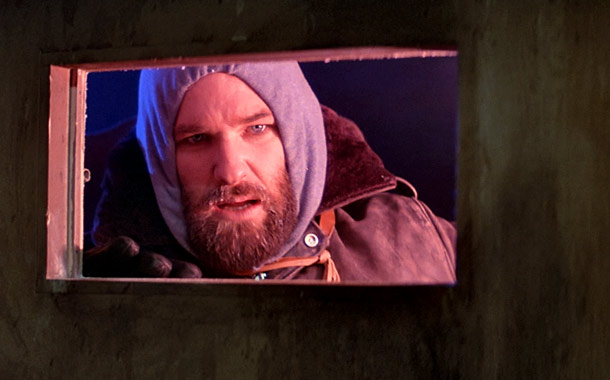
Gratuitous in its gore and relentless in its mounting mental fatigue, John Carpenter’s The Thing is an enduring and influential masterpiece of unflinching bodily invasion and cinematic terror.
There’s an alien that stalking an Antarctic research station and it could be anyone due to it’s shape-shifting capabilities. This paranoiac pageant is led by a reluctant Kurt Russell as PJ MacReady. The moody score by Ennio Morricone ups the scare factor considerably, too.
Carpenter’s crafty cross-pollination of Alien and Invasion of the Body Snatchers benefits greatly from nasty gore-effects, a top-notch cast, and a wonderfully paranoid premise. Carpenter smartly works a siege-like scenario with elements of classic whodunnit, full-throttle horror, jet-black comedy and palpable existential dread.
7. Carrie (1976)

This watershed fright flick from Brian De Palma is prestige horror writ large. Teen angst, religious zealotry, melodrama, and household Gothic coalesce with formalist flare in this supernatural white-knuckler which is also the first and best adaptation of a Stephen King novel.
Wallflower Carrie White (Sissy Spacek), a religious fanatic’s teenage daughter, starts to display paranormal powers just as her confusion over puberty culminates in unbearable and embarrassing ordeals via the social strata of high school.
The cruelty Carrie suffers at school compounds with that which she suffers at home from her abusive born-again mother (Piper Laurie). This terrible abuse is a trigger for Carrie’s telekinesis, and can vengeance be far behind? The prom scene is a tour de force of terror and tragedy as De Palma pulls no punches in one of the most riveting climaxes ever captured on film.
This operatic, tragic, and provocative teen revenge-fantasy is a masterclass in narrative panache with a thunderous payoff and an eerie delicacy. She may not be the perfect prom date but Carrie makes for a teasing and sensational night out.
6. Halloween (1978)
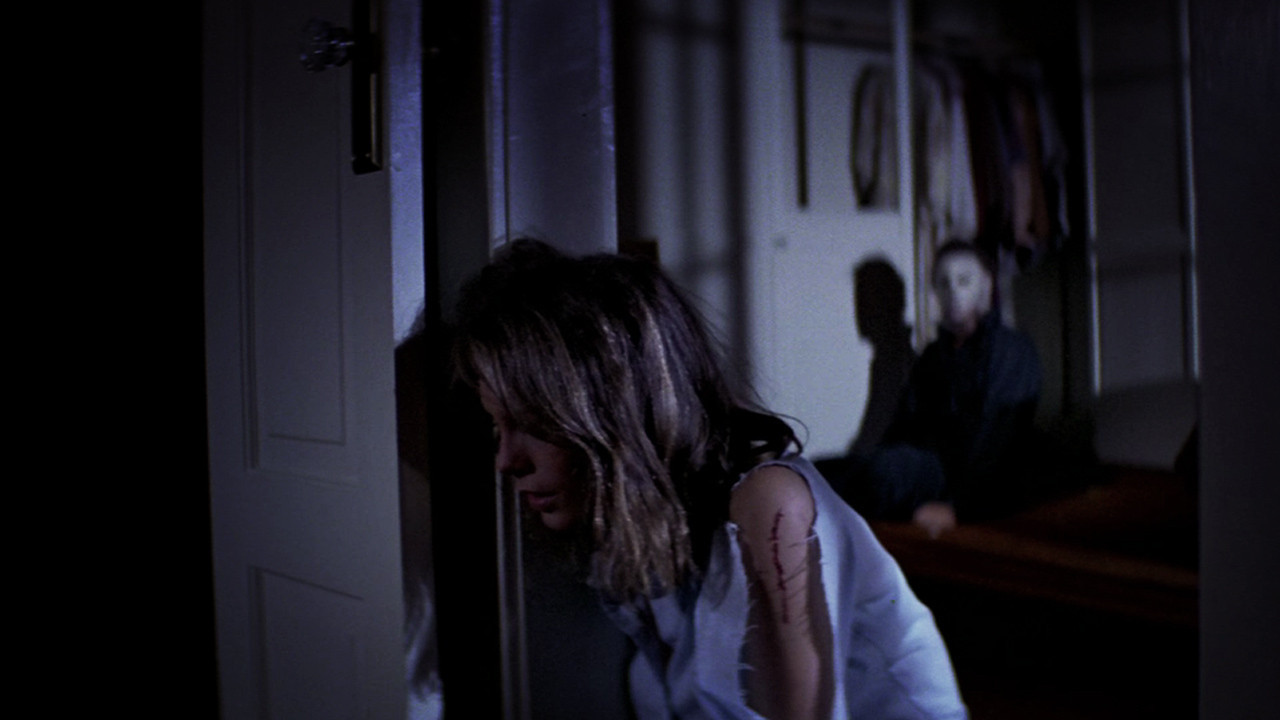
Few films have left such a lasting mark on the genre as Halloween. Sure, there had already been a number of slasher films with nasty boogeyman-like baddies, but never quite like this.
John Carpenter and Debra Hill wrote the script in a scant two weeks and shot it quickly, on a shoestring budget, blissfully unawares that it would gross $100 million, becoming a massive success for such a small-scale indie.
A bare-bones plot about mental patient escapee Michael Myers (Nick Castles), donning a mask and haunting and hounding teen Laurie Strode (a then unknown Jamie Lee Curtis, soon be dubbed “scream queen” and international star) would play with predator-prey tropes to startling and authentic effect.
Carpenter, using a simplistic subjective camera, and a startling soundtrack—composed by himself as an homage to Goblin, Dario Argento’s band du jour for his similarly impressive horror incursions—would stir untarnished shock value and terrible anxiety for decades to follow.
Brilliantly paced with unnerving long takes and fist-pumping confrontations between Michael and Laurie, the feeling of imminent disaster is hard to shake even long after the end credits scroll. Viscerally breathtaking and sensationally scary, Halloween’s influence and chef d’oeuvre prominence is undeniable.
5. Rosemary’s Baby (1968)
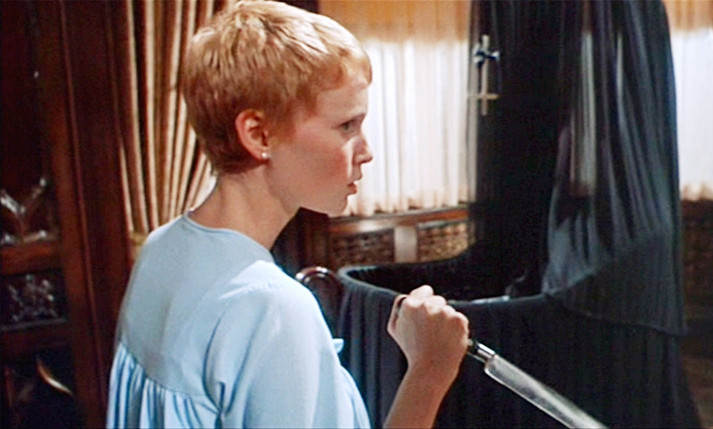
One of the most psychologically shattering films ever made, Roman Polanski’s cinematic adaptation of the Ira Levin novel, Rosemary’s Baby is a horror classic. Everything about this film is utilized to reap maximum fright and panic-prone alarm.
Mia Farrow is Rosemary, and she was never more vulnerable and worthy of salvation. Rosemary and her husband, Guy (John Cassavetes, creepy to the max) have just moved into an outmoded but elegant New York City apartment building. Things feel fatalist right away, despite the over-eager and affable neighbours (Ruth Gordon and Sidney Blackmer), and the life-altering news that Rosemary is preggers. No spoilers here, but holy heck, her trimesters get pretty intense.
As a psychological thriller, as a mystery, as pitch-dark comedy, and as a supernatural freakout, Polanski piles it all on thick.
Rosemary’s Baby was well-received in it’s day, winning awards and garnering great box office. Ruth Gordon won an Oscar and the film appears regularly in awesome lists like this one.
4. Night of the Living Dead (1968)
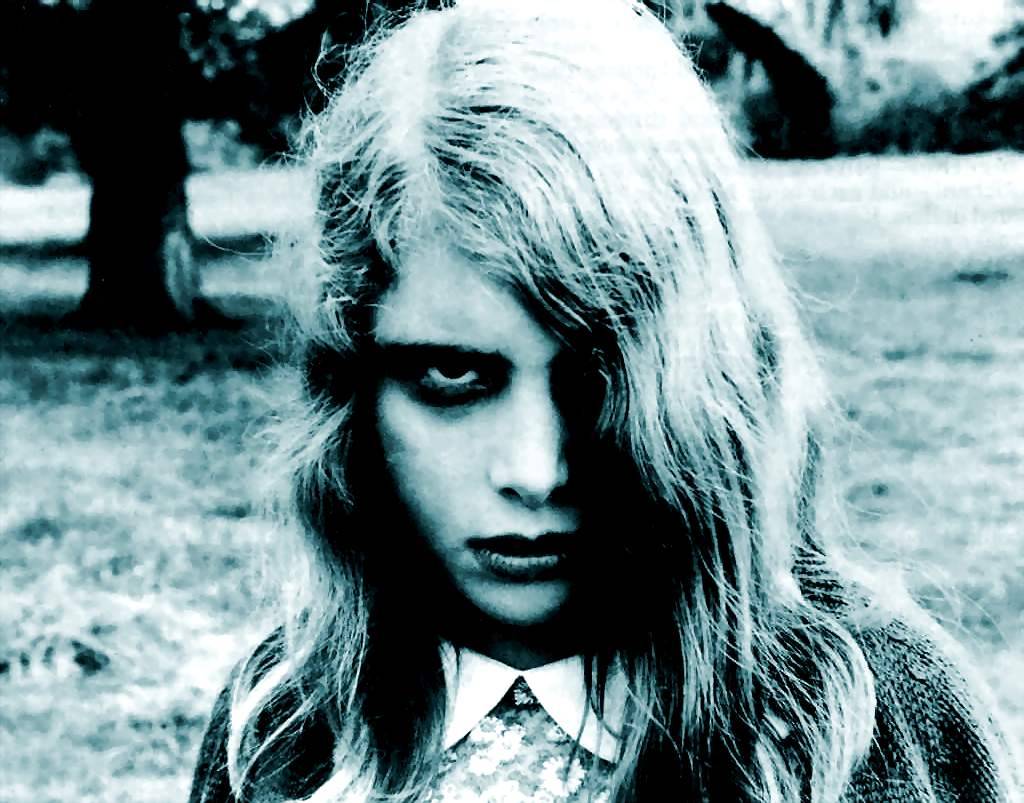
George Romero’s high concept horror film Night of the Living Dead forever transformed the genre, plucking the narrative away from outmoded Gothic traditions and into the imperative present.
Night of the Living Dead, which was shot on the cheap, opens with a premise that could easily veer into comedy as a brother and sister, Johnny (Russell Streiner) and Barbara Blair (Judith O’Dea) make their annual visit to their father’s grave in rural Pennsylvania and Johnny tries to scare Barbara pretending to be a ghoul with the immortal lines, “They’re coming to get you, Barbara!”
But soon the shit and the fan rendezvous with one another as actual ghouls descend upon the pair as they hotfoot it for an abandoned farmhouse to make a stand in. Via emergency broadcasts on TV and radio those taking refuge in the farmhouse slowly piece together what’s happening as the dead rise up on a large scale.
Night of the Living Dead would spawn six sequels––the best of which, even surpassing the original, has got to be 1978’s Dawn of the Dead––and countless imitations, as well as establishing a new tradition in zombie mythology.
In Romero’s prophetic picture there are few assurances. The good guys don’t necessarily win, and hope isn’t a guarantee. “My stories are about humans and how they react, or fail to react, or react stupidly,” Romero says. “I’m pointing the finger at us, not at the zombies. I try to respect and sympathize with the zombies as much as possible.”
Sucks to be us.
3. Suspiria (1977)

“Fear,” Dario Argento has famously said, “is a 370-degree centigrade body temperature. With Suspiria I wanted 400 degrees.” An immersive experience in sensory cinema like no other, Italian auteur Argento’s Suspiria is a spine-tingling and dizzying masterpiece in the form of a nightmare fairytale.
Suzy Bannion (Jessica Harper) is a new American student at the Tanz Dance Academy, a European ballet institute that doubles as a classic Gothic setting, that secretly houses a coven of ferocious witches. Administered by the mysterious Mother Suspiriorum (Lela Svasta) and vice-directress, Madame Blanc (Joan Bennett) Suzy is slowly drawn along a terrible mystery.
Primitive colors, violent deaths delivered with the baroque virtue of a music video using giallo subterfuge, supernatural elements, and Hitchcockian affection. As solid proof of auteur theory––Argento is the Sergio Leone of horror cinema––Suspiria is a hypnotic and self-reflexive powerplay of terror.
Bonus points to the atmospheric, influential, and utterly awesome soundtrack by krautrock legends Goblin––which has influenced every horror movie score since––a must for every Halloween playlist.
2. The Exorcist (1973)
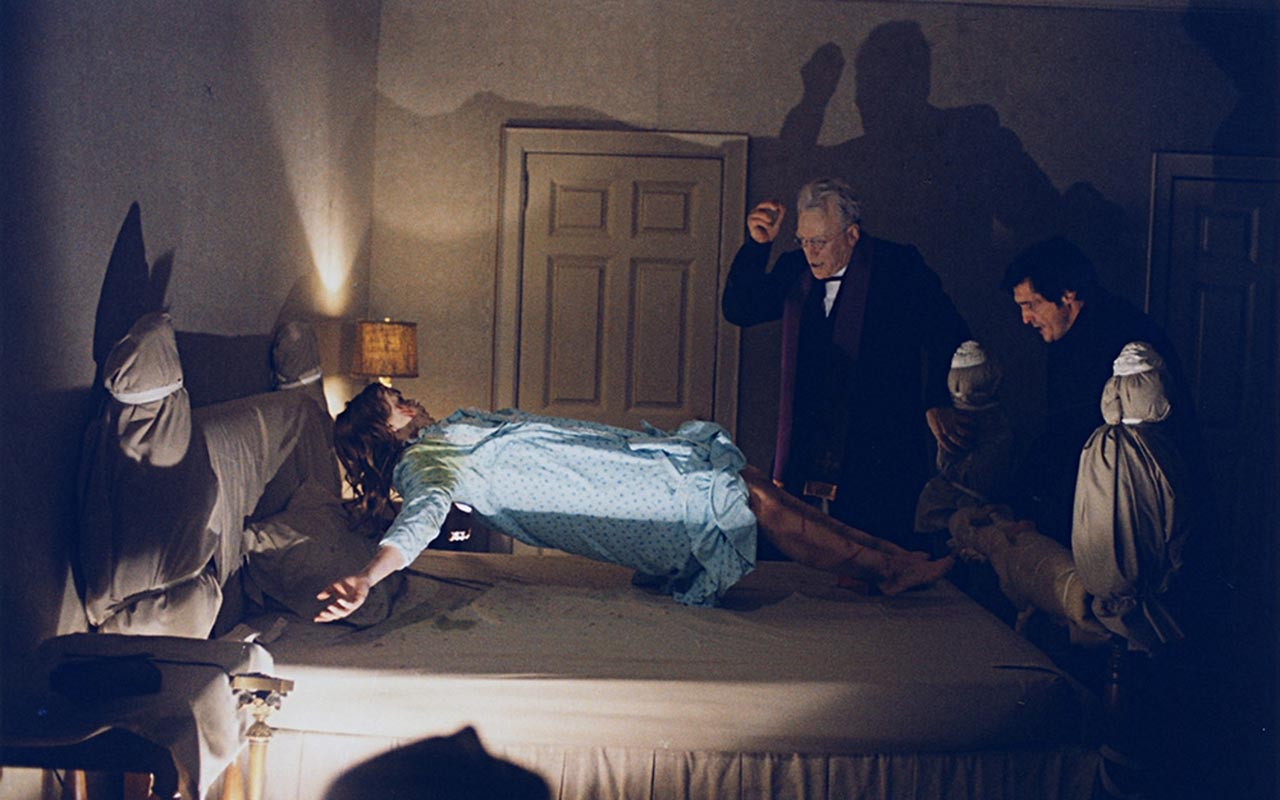
William Friedkin’s The Exorcist was the first weighty blockbuster in horror history––and the first to be nominated for Best Picture at the Oscars––and has heavily altered the genre ever since. The cultural impact of this film was massive as it became an international phenomenon and one of the most profitable fright films ever made.
Based off the 1971 novel by William Peter Blatty, who also wrote the screenplay, and inspired by an actual exorcism from 1949––hugely embellished and biased, of course––Friedkin, working like a black magician, used every shock tactic and exploitation maneuver imaginable in adapting this story. Among his many clever coups was in casting of Linda Blair as the demonically afflicted twelve-year-old Regan MacNeil, and Max von Sydow as the iconic elderly priest Father Lankester Merrin.
On the surface The Exorcist is a tale of the demonic possession of preteen Regan and her mother, Chris’s (Ellen Burstyn) attempts to reclaim her through a troubling exorcism. Nasty surprises lurk in every frame of the film, from Ouija board jolts, dinner party urination, contorted spider-walking, vulgar acts with crucifixes, projectile puking, to 360 degree head spins and more. Some of this macabre stuff is effective, some silly, some just showy schlock, but by and large it’s all rather effective.
The scene where Father Merrin arrives is an unforgettable iconic tableau for the ages and perhaps the most remarkable visage in a film running over with disquieting spectacle. Few films are as intense, unrelenting, and nimbly designed as The Exorcist. It’s a dark fairy tale, a parent’s worst nightmare, and a demonic master work.
1. Psycho (1960)
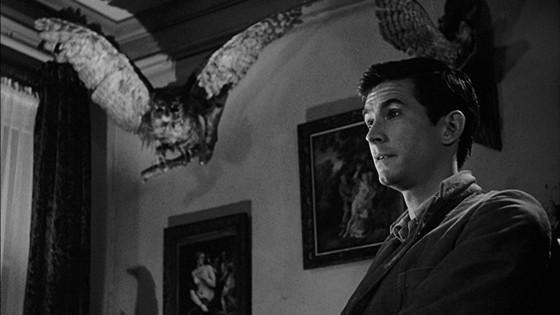
From the shrill violins punctuating Bernard Hermann’s distinguished and unforgettable score to Anthony Perkins’ momentous turn as the amiable and all too charming Norman Bates and all the creeping buildups to unforeseen shocks along the precarious way, Alfred Hitchcock’s Psycho is easily the most influential horror film in history.
The first ever splatter film, Psycho set the template for the slasher subgenre while gleefully breaking every rule in the book as far as upsetting audience expectation at every turn.
Toppling romantic principles straight away, Psycho opens on Marion Crane (Janet Leigh), an alluring and likeable young woman who is stealing $40, 000 from her boss and having an illicit affair with a married man to boot. Not exactly morally upstanding, Marion is still sympathetically rendered and wholly engaging, good-natured even. But before too long she finds herself seeking refuge at the Bates Motel and taking the most famous and ill-advised shower ever photographed.
And old Hitch pulls the carpet out from under us as a half hour into the movie the pleasing protagonist is massacred most ferociously, forcing us to suddenly identify with an accomplice we just can’t be too sure of. What the fuck, Hitchcock? You’re totally breaking all the rules and manipulating us like a pitiable plaything.
“We all go a little mad sometimes.” The now emblematic Bates house was inspired by Edward Hopper’s Americana paintings, details of the crimes had their genesis in real-life Wisconsin serial killer Ed Gein’s atrocities, all indicating that Hitchcock was perforating the American psyche and subconscious.
Family relations, sex, madness, and bloody murder rest at the bosom of one of Hitchcock’s greatest and grittiest works. Psycho isn’t just the nativity of modern horror, it’s also the recognition and acceptance of it.
Author Bio: Shane Scott-Travis is a film critic, screenwriter, comic book author/illustrator and cineaste. Currently residing in Vancouver, Canada, Shane can often be found at the cinema, the dog park, or off in a corner someplace, paraphrasing Groucho Marx. Follow Shane on Twitter @ShaneScottravis.